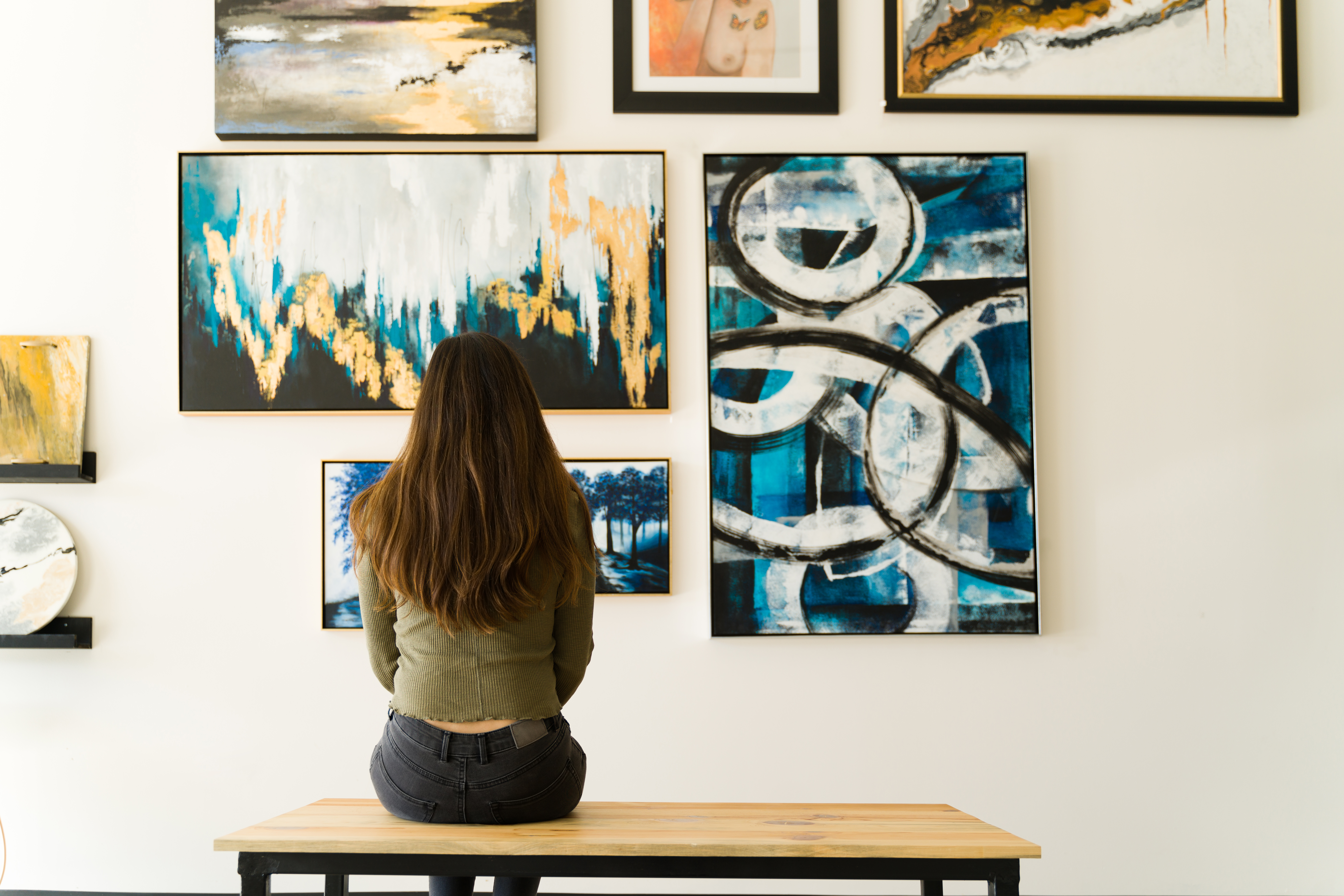Art Market Insights 2023: Trends and Transformations Recap
The Art Market has entered an essential and long-awaited phase of adjustment. In the 2023 the art market unfolds as a year of correction after the grandeur of 2022. Economic uncertainties cast shadows, prompting reflections on whether this year signifies a "new normal" for the industry. As the year concludes, we delve into key insights derived from auction results and exclusive primary market data from Artsy and Artprice, outlining the state of the art market.
1. Auction Market Dynamics: A Shift in Top-End Sales
In 2023, the top end of the auction market witnessed a significant decline in sales value compared to the previous year. The top 100 lots amounted to $2.4 billion, a stark contrast to the $4.1 billion achieved in 2022. Only two artworks exceeded $100 million in 2023, Pablo Picasso’s Femme à la montre (1932) and Gustav Klimt’s Dame mit Fächer (1917), a notable reduction from the six such works in 2022, showcasing a considerable shift in market dynamics.
2. Ultra-Contemporary Artists: A Surge in Demand and Popularity
Artists under 40, affectionately known as the 'Ultra-contemporaries,' are reshaping the art market, drawing attention from influential galleries and commanding staggering prices in auctions across New York, London, and Hong Kong. Rapidly ascending to prominence, some have achieved unprecedented sales, such as Flora Yukhnovich's artwork fetching $3.6 million and Avery Singer's reaching an impressive $5.2 million—amounts deemed inconceivable a decade ago for such emerging talents.
The Ultra-contemporary art segment has seen a notable surge in density, with the number of artists under 40 entering the auction market skyrocketing from approximately 500 two decades ago to about 2,600 today. This expansion, coupled with remarkably high valuations for select young artists, has turned it into a distinct and compelling market segment.
Post-pandemic, following a period of restricted art market activity, buyers eagerly sought to reconnect with artistic creation by acquiring works from these very young artists, especially at auctions. A rush for the freshest, newest works ensued, driving the contribution of artists under 40 to auction turnover to over $200 million for three consecutive semesters, spanning H1 2021 to H1 2022. While the momentum slowed in 2022, H1 2023 still recorded $127 million in the Ultra-contemporary art segment. This slowdown was attributed to a contraction in the number of ultra-high-end transactions, with results in the six or seven digits range shrinking by almost 45% compared to the first half of 2022.
Despite the thinning of the high-end segment, most collectors remained highly active at auctions. Demand remained impressive, with over 4,500 Ultra-contemporary works exchanged in H1 2023, a substantial increase from the average of 3,000 per semester before the health crisis.
The names Flora Yukhnovich and Avery Singer symbolize this transformative wave, showcasing the dynamic and evolving landscape of the Ultra-contemporary art movement.
3. Equity for Female Ultra-Contemporary Artists
Despite challenges, female ultra-contemporary artists are gaining equity in the auction market. While overall parity is still a work in progress, the top 50 works by ultra-contemporary artists born in or after 1985 feature a majority of female artists, including Avery Singer, Lynette Yiadom-Boakye, and Emma Webster.
4. Figuration Dominates Market Preferences
Amid growing interest in abstract art, figurative artists and artworks remain the darlings of buyers. The top 100 in-demand artists on Artsy predominantly work in figuration, reflecting buyer preferences. Figurative works also command the majority of the highest prices in the auction market, emphasizing their enduring appeal.
5. NFTs, Stability Emerges After Volatility
Two years post the groundbreaking sale of BEEPLE Everydays: The first 5000 Days for $69.3 million, NFTs find themselves in a more subdued position within the art market. The substantial contraction in 2022, triggered by significant fluctuations in cryptocurrency prices—NFTs' indexed foundation—substantially impacted the market's allure. The crypto-currency collapse, with Bitcoin plummeting by 63% and Ethereum by 82% in 2022 compared to its November 2021 peak, cast a shadow on this domain.
However, in the aftermath, stability has returned, prompting auction houses to cautiously navigate this arena, yielding noteworthy successes. Dmitri Cherniak and Tyler Hobbs, pioneering figures in generative art, secured new 7-digit records, ranking 2nd and 6th in the global Ultra-contemporary Art ranking based on H1 2023 auction turnover.
Sotheby’s played a pivotal role in establishing these records, consistent with its foray into digital art. The auction house launched the Sotheby’s Metaverse platform in 2021 and introduced its NFT marketplace in May 2023. Notably, Sotheby’s facilitated the sale of an exceptional batch of NFTs from the Three Arrows Capital collection, achieving remarkable results. Tyler Hobbs' Fidenza #725 (2021) fetched a million dollars against a high estimate of $180,000, while Dmitri Cherniak's Ringers #879 (The Goose) (2021) reached $6.2 million against an already substantial estimate of $3 million. Dmitri Cherniak's regulated auction sales amounted to $7.1 million in H1 2023, constituting half of the total Ultra-contemporary NFT auction turnover during the same period.
6. Hong Kong Emerges as Ultra-Contemporary Hub
In the past two to three years, Hong Kong has witnessed the ascendance of young artists whose works command spectacular prices, solidifying its status as a major hub in the Ultra-contemporary art market, rivalling New York and London.
Despite its nascent art auction market before 2008, Hong Kong has transformed into a vital exchange center, particularly for Ultra-contemporary art. In H1 2023, Hong Kong closely trails New York in this segment, generating $39 million from 239 Ultra-contemporary works, compared to New York's $41 million from 688 lots. This shift indicates that the most dynamic bidding confrontations for young Western artists occur primarily in Hong Kong, supplanting New York, the historical stronghold of this market.
Notably, Hong Kong has exhibited resilience against the slowdown in the high-end market, experiencing an 11% reduction in sales turnover compared to -42% in the United States and -52% in the UK. Hong Kong now hosts the majority of 7-digit results in this segment, recording seven million-plus results for artists under 40 in H1 2023, surpassing New York's four and London's two.
The city has become a testing ground for introducing new Western painting stars to the auction market. Artists like Camilla Engstrom, propelled to fame through Instagram, exemplify this trend. Her work, Love Tastes Delicious (2020), soared to almost $73,000 at Christie’s HK, illustrating Asian collectors' penchant for vivid paintings with Surrealist influences. The outperformance of young artists in Hong Kong has intensified, with million-plus results achieved by artists like Matthew Wong, Avery Singer, Loie Hollowell, Lucy Bull, and Jadé Fadojutimi in H1 2023.
The highest-valued works in Hong Kong sales primarily feature non-Asian artists, including Matthew Wong, Avery Singer, Loie Hollowell, Lucy Bull, and Jadé Fadojutimi, all achieving million-plus results. Notably, results in Hong Kong may diverge from those in New York, highlighting the distinct preferences of regional collectors.
Hong Kong is no longer merely an 'accelerator' for Western art prodigies; it has evolved into a hub of intense and passionate art acquisition. Major auction houses, such as Sotheby’s, Christie’s, and Phillips, are actively expanding their presence in Hong Kong, recognizing the robust demand from Asian clientele. Sotheby’s plans to establish a new headquarters, exhibition space, and auction room in Hong Kong. Christie’s is set to inaugurate its expansive Hong Kong headquarters designed by Zaha Hadid's firm, and Phillips opened its new headquarters designed by Herzog & de Meuron in March 2023. The concerted efforts of these auction houses in Hong Kong underscore its growing significance in the global art market.
In Conclusion
This year, the global art market has shifted towards a more subdued atmosphere, particularly evident in the upper echelons, where transactions in the seven to eight-digit range have contracted by 22%. The resulting -15% decline in global sales turnover from Contemporary art reflects an anticipated adjustment post-pandemic frenzy.
Despite this, the 2022/2023 period marks a historic high in the volume of Contemporary works exchanged at auction, with over 123,000 acquisitions by international collectors—100 times more than at the start of the millennium. Painted works dominate, comprising 44% of transactions and contributing three-quarters to the total global turnover from Contemporary art. Notably, a Jean-Michel Basquiat piece achieved the highest result at $67 million.
While multi-million-dollar transactions are impactful, they represent a niche market. Conversely, the rest of the market, especially works below $5,000, is witnessing intensified growth, constituting 80% of the global transaction volume (over 99,000 lots).
Collectors are increasingly drawn to discovering and acquiring works by new artists, particularly in the Ultra-contemporary segment, where transactions have surged by 30% compared to the pre-Covid period. Emphasizing the appeal of young painters and digital art pioneers, collectors eagerly participate in daring bids for works below $50,000.
This resilient demand underscores the role of art as a vital source of inspiration amid contemporary uncertainties.

